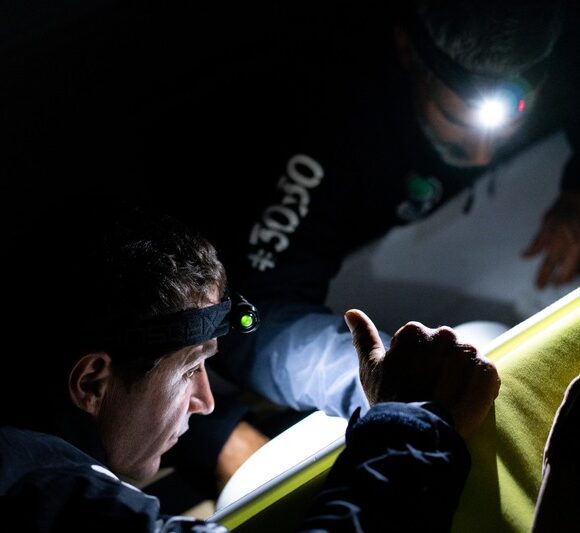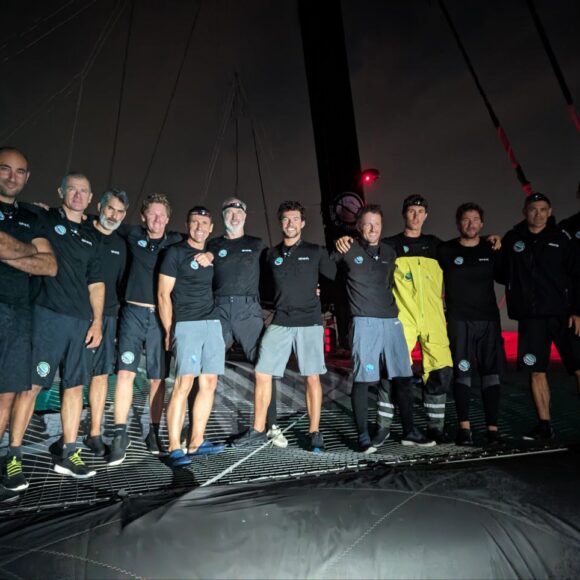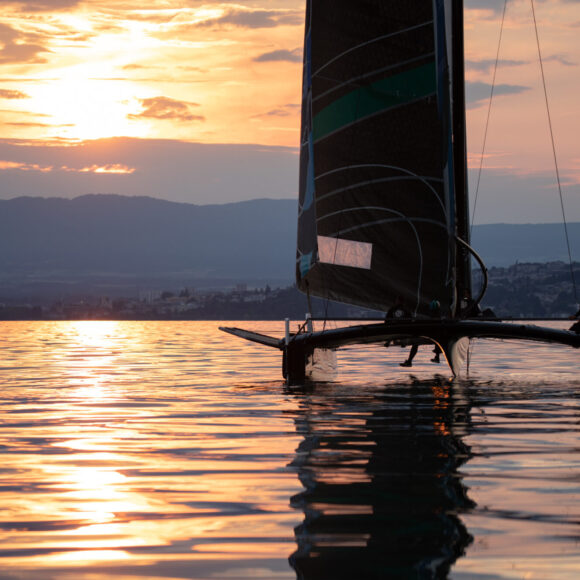Headed by Yann Guichard, the crew went for its second sail of the year on Tuesday through into Wednesday. Everyone aboard quickly got their bearings as they managed to tease 35 knots out of the boat. Nevertheless, their sea passage had to be cut short due to the hundreds of wooden beams and planks in the water, which had fallen off a cargo ship a few weeks earlier. Keen to avoid damaging Sails of Change, the Team opted to return to their base.
Once again, the crew was keen to get back out on the water and soak up the sea spray, the constant noise of the waves crashing against the hull and the sense of speed, as well as rediscover their automatic reflexes. Indeed, for the second week in a row, the crew of Sails of Change was able to cast off and head offshore. It’s a way of getting their teeth into this new season, with another crack at the Jules Verne Trophy record (round the world record under sail) on the cards at the end of the year, and a bid for the Discovery Route record (from Cadiz in Spain to San Salvador in the Bahamas) from mid-April. “Having these projects in the pipeline has only strengthened our motivation”, admits Yann Guichard.
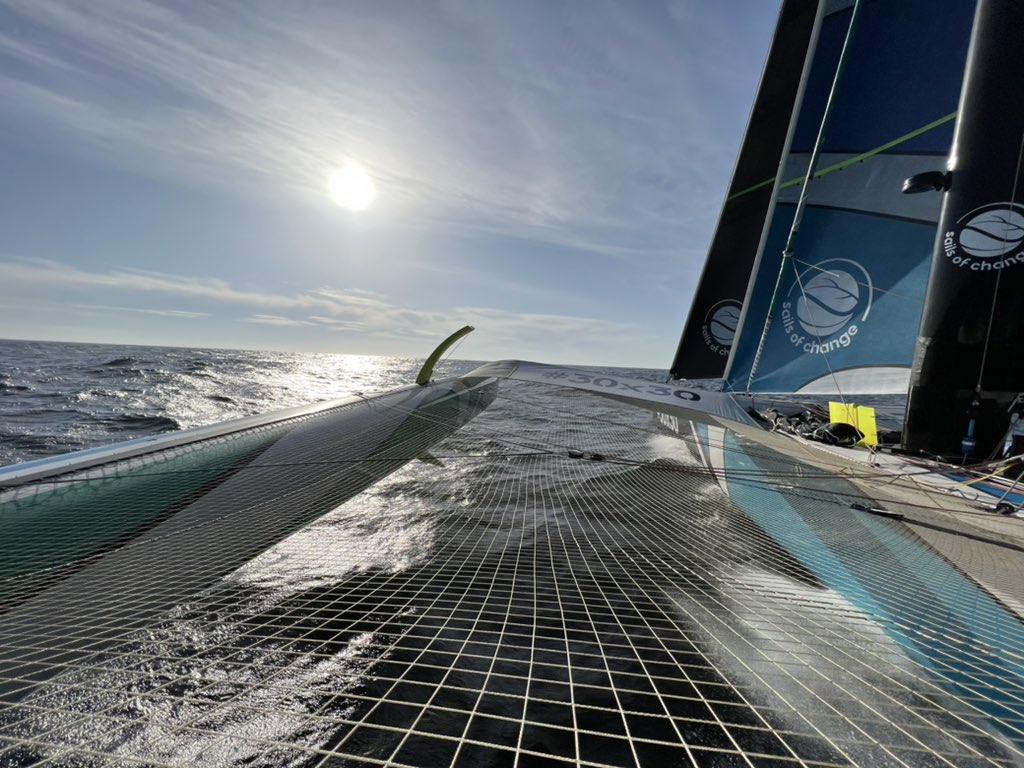
Rediscovering ‘race mode’
Nearly three months after putting a halt to their plans to set sail on the Jules Verne Trophy, “all the people involved in the project and working for Spindrift, both on land and at sea, have rallied together and are 100% ready for action”, confirms the skipper. Within the crew, everyone is totally focused and giving the project their full attention, with a renewed enthusiasm in evidence as they prepare for the fun and excitement of facing the elements again.
After an initial 18-hour sea passage to Arcachon, in south-west France, last week, the crew of Sails of Change climbed aboard again on Tuesday. Their goal: to rack up the miles and spend a couple of days offshore to get back into ‘race mode’. It was also a great opportunity to boost team cohesion, with three new sailors – two in the role of bowman, who were in charge of handling the headsails, and one helm-trimmer – fleshing out the ranks to test themselves in real conditions.
“It’s the boat’s integrity that was at stake”
Aboard the boat, everyone rapidly found their feet and were enjoying the unique sensations offered up by the maxi-trimaran. “It was breezy, with nearly 25 knots of downwind conditions, and we were making headway at over 35 knots”, explains Yann Guichard. However, towards the end of the day, at dusk, they detected the presence of various blocks of wood floating on the surface. Consisting of 6-metre-long beams and hundreds of planks, in the middle of the ocean, it was a rather precarious venture.
It was a case of summoning the reflexes and making the boat safe. “We were aware of the presence of this drifting wood before we set off. We’d slowed up, reduced the sail area and ensured that nothing had collided with the appendages”. Given that there were far too many lumps of wood in the area, “it was the boat’s integrity that was at stake”. The decision to retrace our steps to the south was necessary to cut short the sea passage and keep the maxi-trimaran intact.
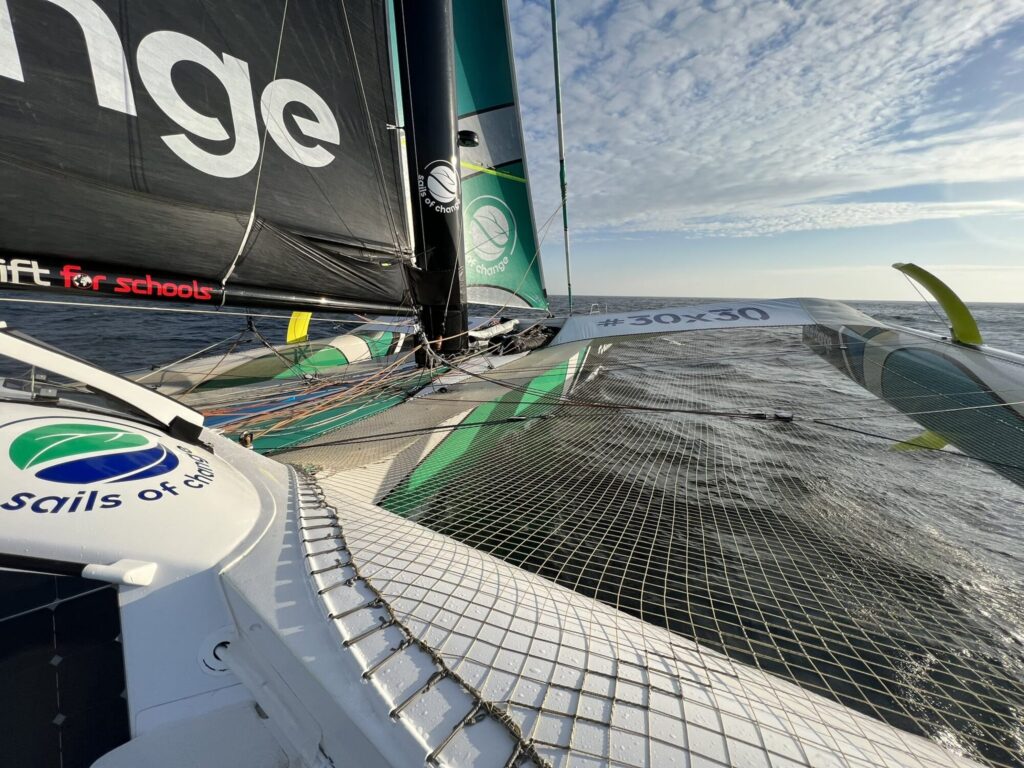
There needs to be an ‘awakening of consciences’
Inevitably, there’s an element of frustration at not sticking to the roadmap and cutting the sea passage short. However, this feeling quickly gives way to a sad observation: “even though it’s only wood, we can only be sorry to see the sea in such a state”. These blocks of wood, washed up all over Brittany’s beaches, are drifting around offshore after falling off a cargo ship three weeks earlier. “This is yet another illustration of the urgent need to protect the oceans, to stop pouring our waste into them, to awaken consciences and to ensure that impunity in this regard is never acceptable”.
At Spindrift, this necessity is reflected right across the project, including its support for the ‘30×30’ appeal, whose logo adorns the multihull’s floats. Developed by the UN Convention on Biological Diversity, this strategy aims to convert 30% of the planet (oceans and land) into protected areas by 2030. “This message, which we are eager to pass on to the widest possible audience, resonates with what we’ve just experienced”, agrees Yann Guichard. Though the crew already has its sights on its daily life on shore, with some fitness sessions on the upcoming schedule, these images of wood drifting around on the surface of the water as far as the eye can see will remain in the memory of sailors, and are a new signal to mobilize to protect our ecosystems.

